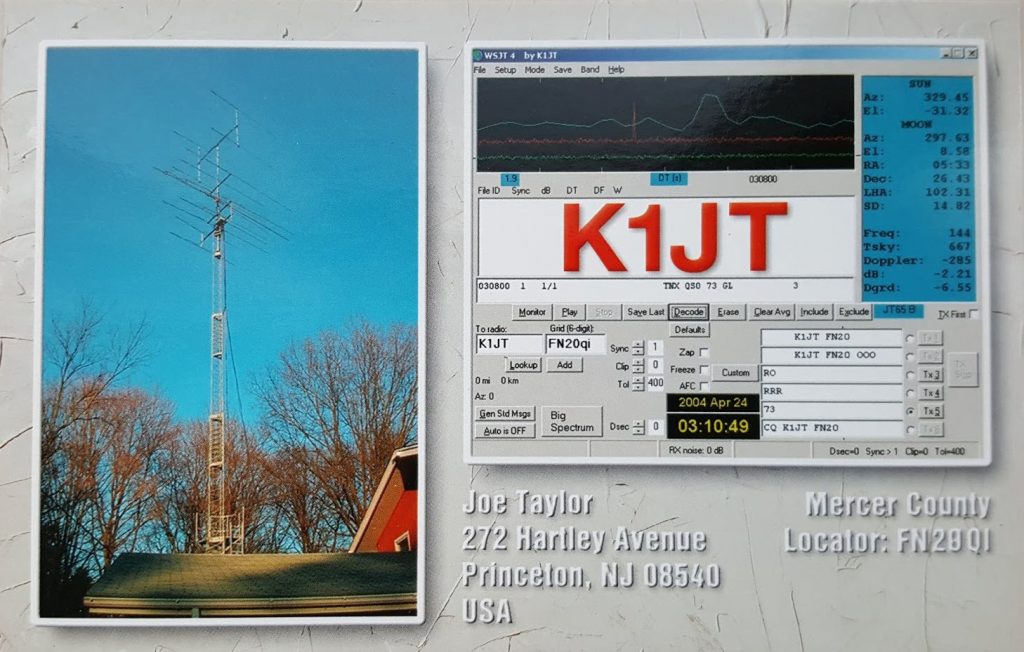We all have memorable QSOs. For me, they are a mixture of different types of contacts. Some are based on the country’s rareness, winning an award, working a country that we dreamed of as a youth, or a contact you share with friends or family.
When asked to write about my favorite QSOs, I was immediately overwhelmed. With almost 90,000 QSOs in my log, I felt it would be impossible to narrow it down to a few contacts. I started writing this column several times, only to run into an insurmountable writer’s block. Finally, I just had to decide on the few contacts I would focus on.
My Pursuit of Worked All States (WAS)
As new Hams, many of us pursued WAS as one of our first awards. Starting out, it seemed almost impossible, but if we spent some time on the air, the numbers started to rise quickly. Unfortunately, getting those last few states seemed to drag on forever. Typically those include some of the sparsely inhabited states or those far-away states of Alaska and Hawaii. In my case, I was down to just needing two states when I finally worked Hawaii for number 49. Little did I realize at the time, but not only had I worked Hawaii, I had also worked a legend in Amateur Radio, Katashi Nose, KH6IJ. As noted in KH6IJ’s Hawaii Amateur Radio Hall of Fame Bio, “For many Hams, he was often the first Hawaii or Oceania contact, and was known and respected throughout the world as a DXer and champion contester. He had a unique mix of ability, patience, and good sportsmanship. He was also an outstanding teacher of physics and science and had a storied life filled with accomplishments and writings.”
By the way, my final confirmed state to finish WAS was Nebraska; it took three contacts before I could get someone to QSL.
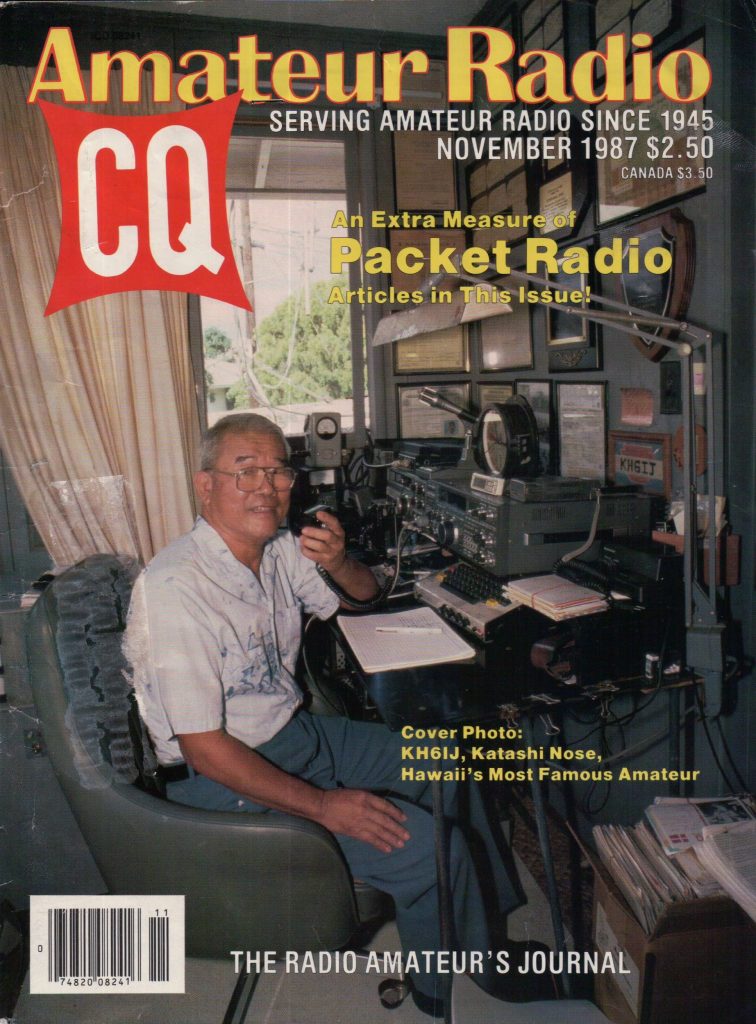
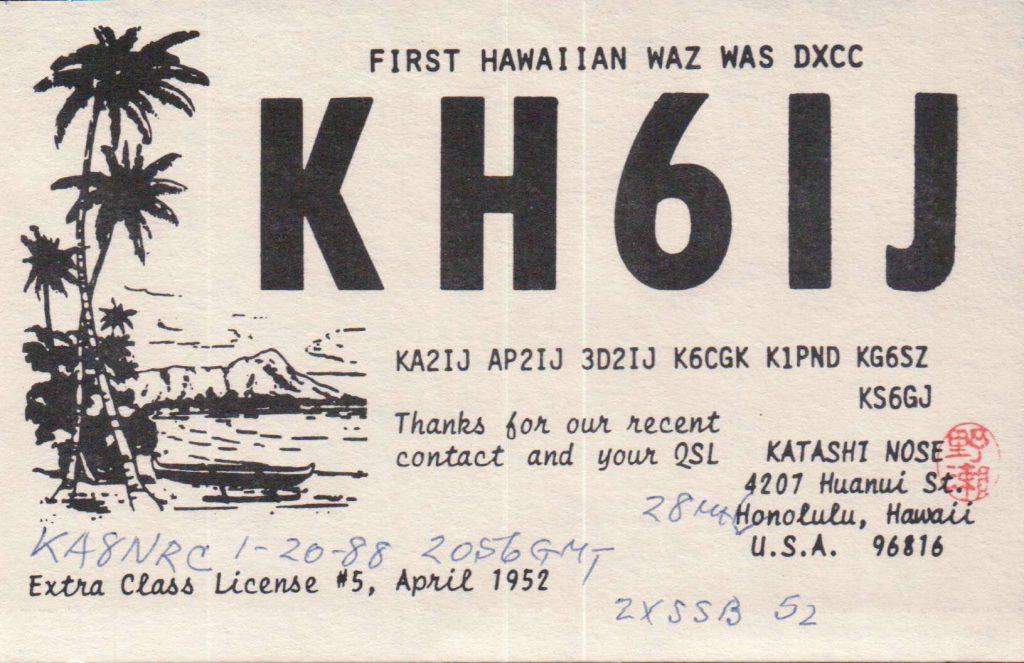
A Twofer—Working My First JA and Getting an Award
The vast majority of my contacts have been QRP (less than 5 watts output). This is in part because no one told me novices should not start with a QRP radio (it was a Ten-Tec Argonaut 515 with 2 watts output). This worked out well for me in earning an award while working my first Japanese station. The QRP-ARCI (QRP Amateur Radio Club International) has an award for working 1,000 plus miles per watt of power. This time, as in the previous QSO, I also worked an Amateur Radio legend—Taroh Yagi, JH1WIX.
“Well-known JA DXer and Amateur Radio pioneer Taroh Yagi, JH1WIX (ex-J1DO, J2GX) …was first licensed in 1924,” the ARRL wrote in 2001, announcing that Taroh had become a Silent Key at the age of 93. “Yagi often was the first JA contact for many new Hams. Among the founding members of the original JARL, founded in 1926, Yagi, in his later years, made most of his contacts on CW and spent a lot of time on the 15-meter Novice band handing out JA to newcomers.”
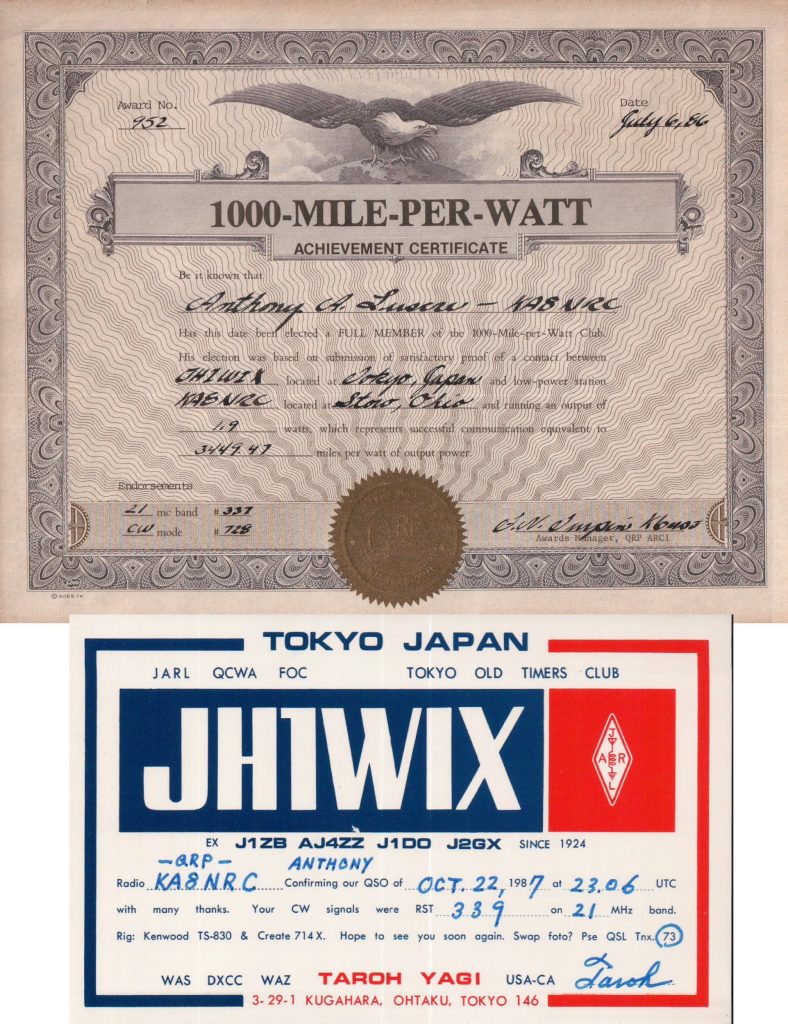
A Daydream of My Youth—Mongolia!
One of the things that eventually led to my Amateur Radio license was my childhood love of geography and maps. I quickly realized I would never be able to travel to all the exotic places I had studied, so Amateur Radio contacts became a viable substitute for a young geographile. When studying geography, there are certain strange and exotic places that seem to capture our imaginations more than others. For me, one of those places was Mongolia. It took a number of years, but eventually I had my chance to make a contact with Mongolia. This was also a memorable QSO as it resulted in a beautiful gold-gilded QSL card (unfortunately, the gold does not show up well in the photo below). Since my first QSO with JT1CO, I have enjoyed many additional contacts with him, including a few double multipliers in CQ WW contests!
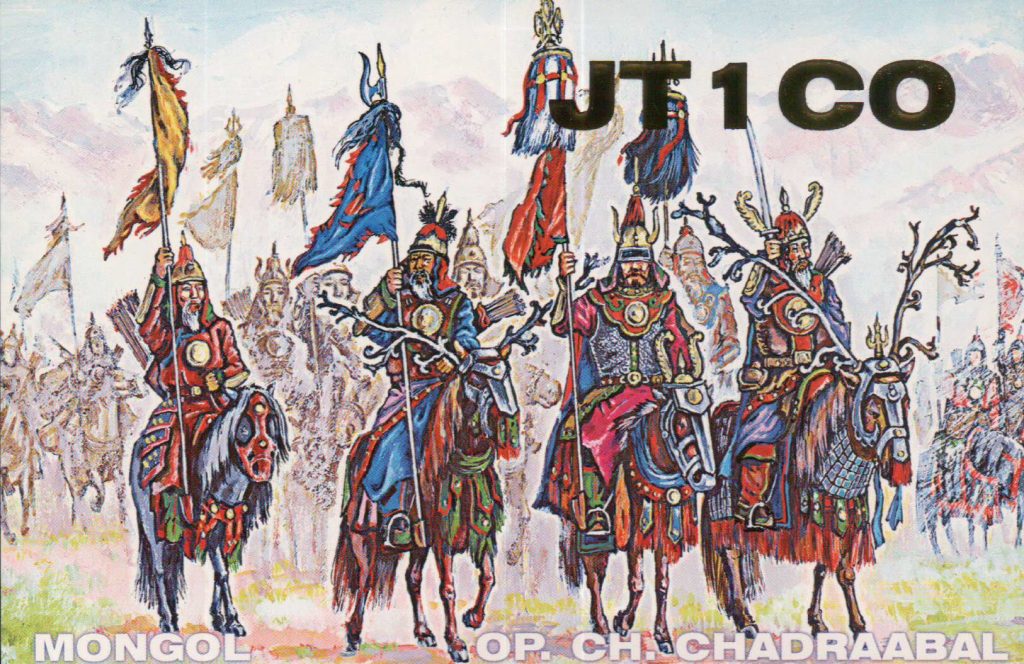
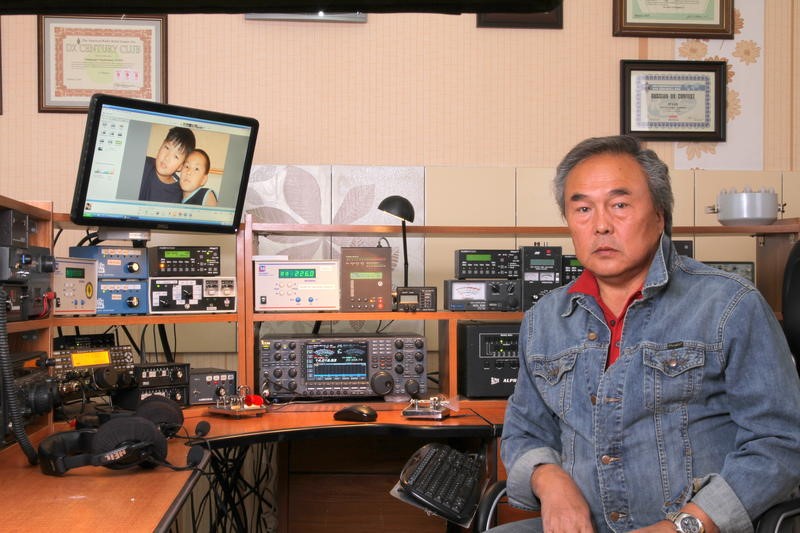
A Fun Family QSO Experience
My next favorite QSO was one I remember more for the joy it brought to my two young children. Aaron (8) and Erica (5) had both seen the Looney Tunes Tasmanian Devil cartoons, so when I called them to the basement radio shack they were surprised to hear that I was talking to someone in Tasmania, and they couldn’t stop giggling. Operator IG (Moss) Kucerans, VK7IK, was a great sport and even agreed to say hi to my two curious children. My children’s final excitement occurred when Moss’s QSL card arrived, and they saw a drawing of a real Tasmanian Devil pictured on it.
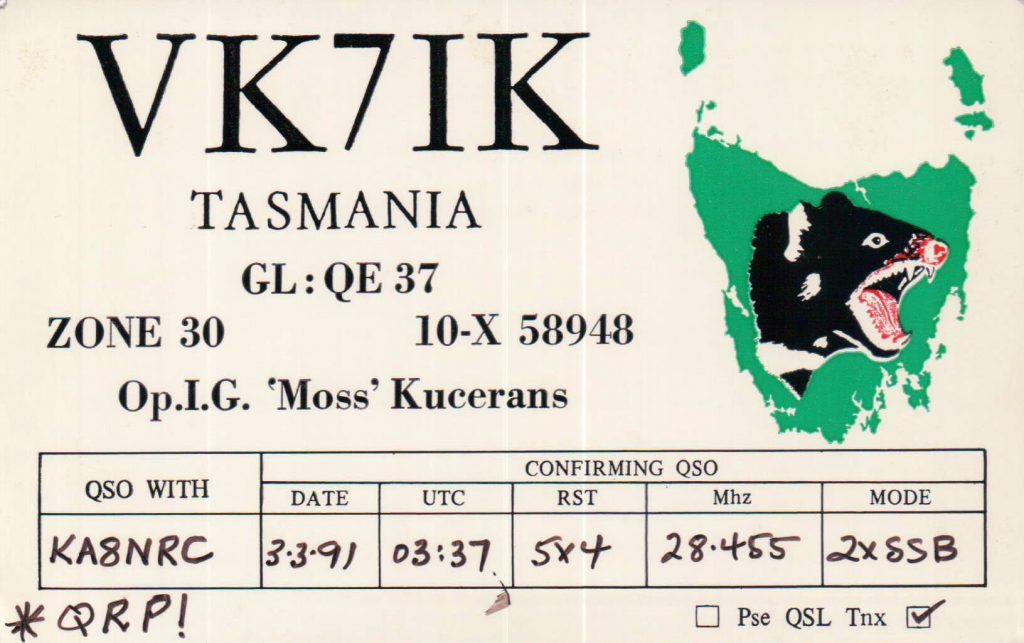
Another Twofer—A Rare DX Location and Someone I Knew on the DXpedition
After many years of DXing and contesting, my current total DXCC is at 326. Once an operator’s totals get near 300, the potential for new entities diminishes. Back in 2006, my totals were sitting at 287, and a chance for #288 would come with the anxiously awaited 3Y0X DXpedition to Peter I Island. The 3Y0X website hyped the DXpedition with the catchphrase, “More people have flown in outer space… than have set foot on Peter I Island!” I also knew a local Ham, Mel, W8MV, who was on the expedition. I only eked out one contact with my QRP signal, but that was enough to get #288!
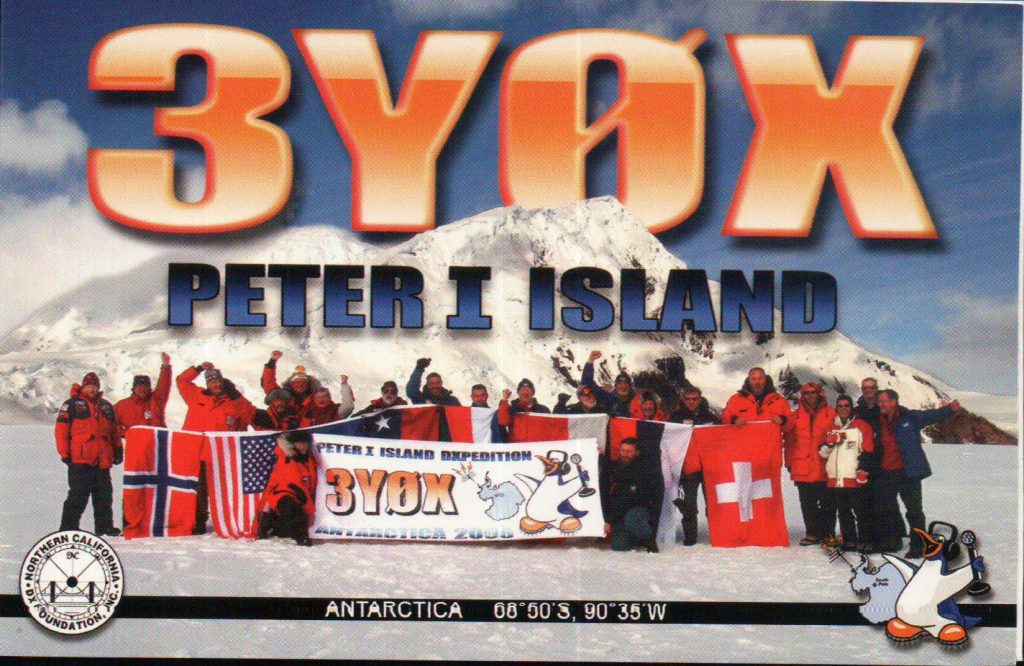
Bittersweet—A DX Location You Worked but Is No More
“Deleted” is the term used by the ARRL DXCC program for entities that are no longer with us. Having been a Ham for almost 40 years means I have a few of these in my log. As a geographile, I have always had a soft spot in my heart for tiny and quirky locations. Malyj Vysotskij Island (R1M) is an uninhabited island in northwest Russia that was once leased to Finland, and it definitely fits the mold for both tiny and quirky. As reported by the ARRL, when the lease was canceled in 2012, R1M became a deleted DXCC entity. I have worked six other deleted entities, but none as rare or quirky as Malyj Vysotskij Island.
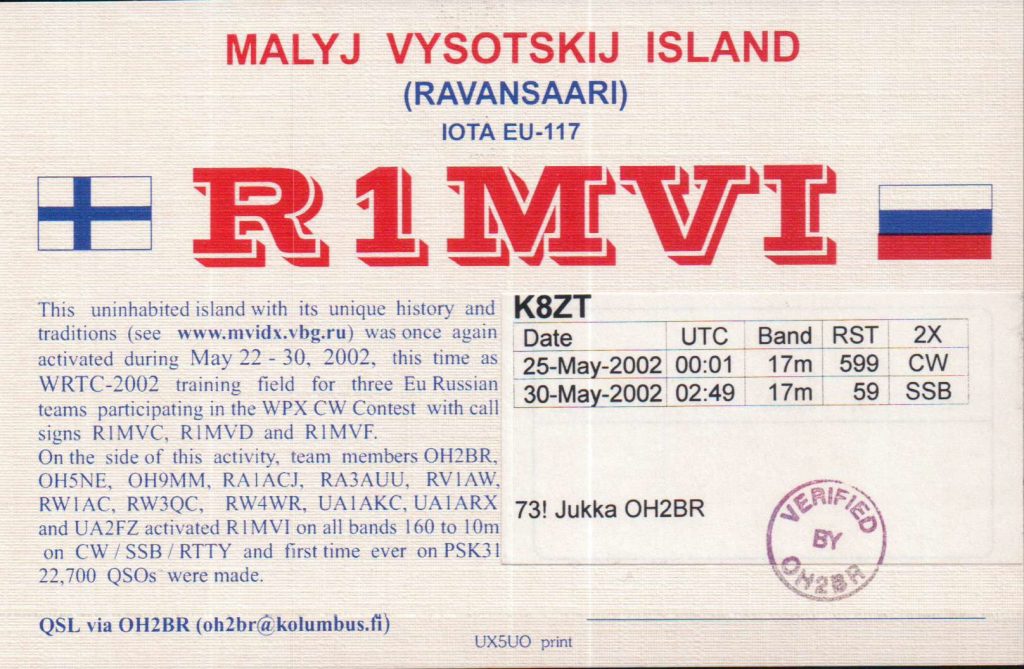
A New Mode and a QSO with Its “Father”
Over the last few years, the growth of FT8 and FT4 has been nothing short of phenomenal. Some of my most exciting contacts on these modes have been with their “father.” Nobel Laureate Joe Taylor, K1JT, is the originator of these modes and their predecessors in the WSJT-X suite. We do not often see this type of change in mode use in Amateur Radio; other examples include the switch from spark to CW and from AM to SSB. It was great to be there from day one of these modes, so some of my favorite QSOs in this mode have been with K1JT.
